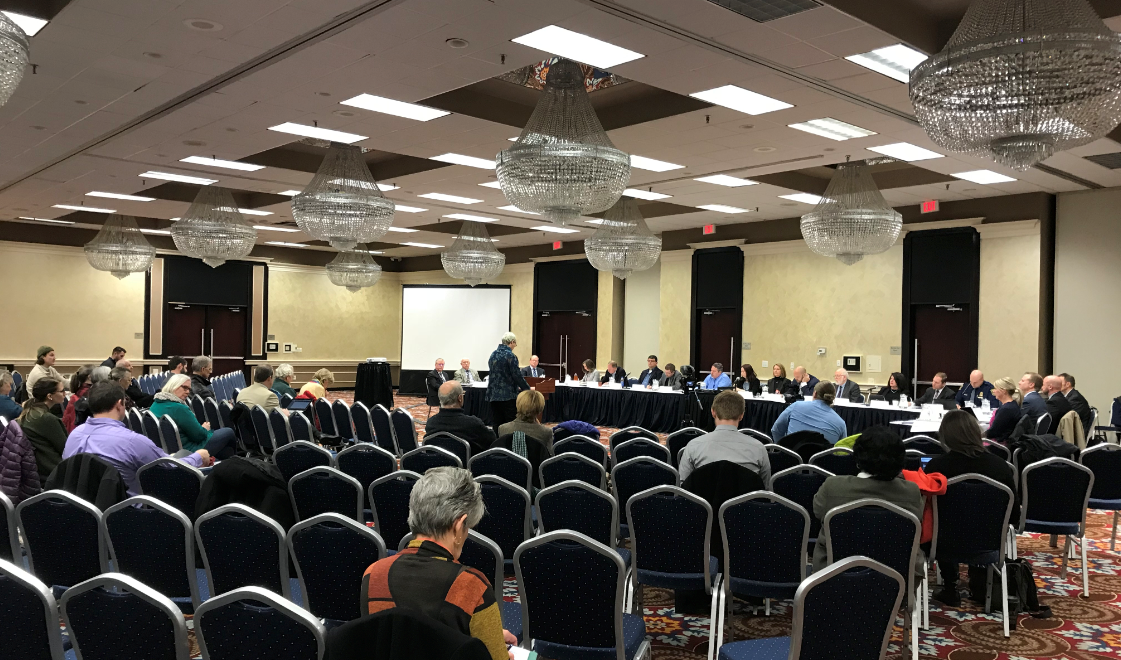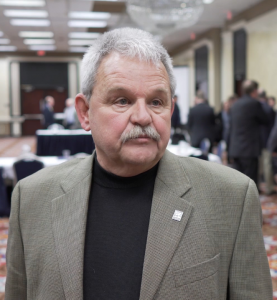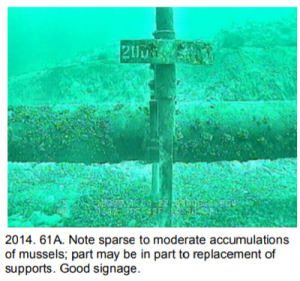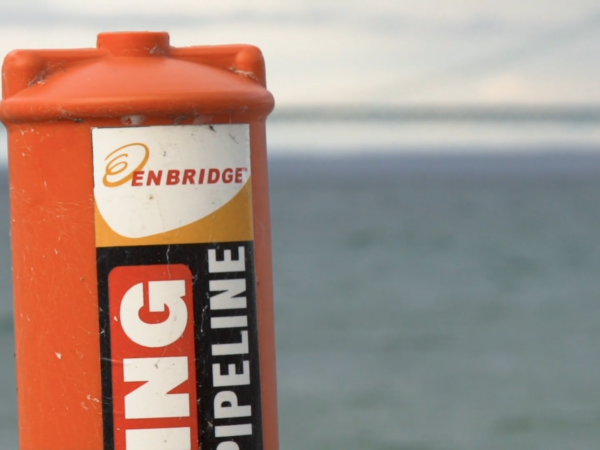
At Monday’s Michigan Pipeline Safety Advisory Board meeting in Lansing, several board members expressed disappointment and even outrage at Governor Snyder’s announcement of a legal agreement he hammered out with Enbridge at the end of November, calling for new safety measures for the Line 5 Pipeline. – an agreement the Governor brokered without the help of the Board.

Mike Shriberg, Great Lakes regional executive director of the National Wildlife Federation, courtesy of Robert Byrne
Board member and National Wildlife Foundation Executive Director Mike Shriberg called the agreement a “back room deal” and said the Governor was basically discounting the very existence of a Board the Governor created to help to keep an eye on Line 5 and other pipelines and make sure they’re safe.
Board member and Tip of the Mitt Policy Director Jennifer McKay said the Governor’s move was an insult to the Board and to the public who have weighed in often with their comments and believed they had a voice in the future of the Line 5 Pipeline.
But then the meeting took a different tone.

Jennifer McKay, Tip of the Mitt Policy Director, courtesy of Tip of the Mitt Watershed Council, courtesy of Robert Byrne
To the surprise of several members of the Board and members of the public in the audience, McKay proposed a resolution that called for the temporary shutdown of Line 5 until the entire line is inspected for protective coating gaps and all gaps are filled. There were more abstentions than “YES” votes, so the audience as well as many members of the board thought the resolution didn’t pass.
The next proposal to be introduced called for modifying the definition of “adverse weather conditions” from eight foot waves to three foot waves. There were more abstaining votes than “yes” votes on that proposal, too.
Finally, a third resolution called for the state to complete a more “Michigan-centric” study of the energy needs that are met by Line 5, making sure that the alternatives to the pipeline focus on the needs of Michigan residents rather than on the business interests of Enbridge.
Once again, abstentions outweighed “YES” votes.
Board members who abstained said they felt protocol was not followed, and that a vote shouldn’t be taken until they had time to look over the wording in the motions.
But after some discussion, the Board said all resolutions passed.
The three resolutions were introduced by Jennifer McKay, R. Craig Hupp and Mike Shriberg. Board members Homer A. Mandoka and Chris Shepler supported the proposals. The majority of the abstentions on the board came from members who worked for the State of Michigan.
The Pipeline Safety Advisory Board serves only in an advisory capacity. Its actions are not binding upon the state. But several Board members and members of the public said the passage of the proposals is significant in that it comes at a pivotal time for the future of Line 5, which has been under increased scrutiny lately as new revelations about protective coating and other issues come to light.
The Line 5 pipeline was built in 1953. It carries 23 million gallons of oil and gas underwater in the Straits of Mackinac from Michigan’s Lower to Upper Peninsula. The oil and gas is pumped from Superior, Wisconsin to Sarnia, Onatrio.
At the meeting, Enbridge Director of U.S. Government Affairs Peter Holran said the plan to add 22 new support anchors to the 4.5 mile long pipeline on the lake bed in the Straits of Mackinac has been halted for the winter months while the state continues to review Enbridge’s application. Holran says Enbridge is committed to completing the work in 2018.
He said the study of the organisms on the pipeline (like mussels and other organisms that cling to objects underwater) is moving forward, and the samples are back in the laboratory and being analyzed. However, he said Enbridge has informed the state that some of the samples have been contaminated.
As far as the reports of the discovery of protective coating being worn off the pipeline, Holran apologized for what he said was the “appearance” that Enbridge was not being transparent. He said the protective coating was worn off as early as 2014 – and Enbridge reported it to the state at the time – during the installation of one of the anchor supports.
He said all 128 observations of the anchor support locations – per the state, using remote-operated vehicles – were completed in September and October of 2017. He said Enbridge found three areas along the pipeline that were bare metal, and more than 40 of the pipeline surfaces had what are called “calcereous deposits” (defined as deposits made up of freshwater calcium carbonate.)
But he reassured board members that the pipeline itself has not been compromised. He said , “There is no corrosion or metal loss along Line 5 in the Straits of Mackinac.” However, Holran revealed the recent discovery of a suspension cable that was accidentally dragged along Line 5 by one of Enbridge’s own boats, causing minor damage to a small section of the pipeline.

Dr. Guy Meadows, Director of The Great Lakes Research Center at Michigan Tech, courtesy of Robert Byrne
Also at Monday’s meeting, Dr. Guy Meadows, Director of The Great Lakes Research Center at Michigan Tech, who stepped down from the Board recently when he was selected to head up a team of academic researchers to complete a risk assessment of Line 5 gave a presentation on how his project is going. Meadows was brought on board to take over the risk assessment after the prior report was thrown out due to conflict of interest because the company was doing similar work for Enbridge on another project.
Meadows tells Great Lakes Now he has reached out and received commitments from 41 Great Lakes researchers from 9 Universities. 7 of them are in Michigan. NOAA (National Oceanic and Atmospheric Administration) in Ann Arbor, Michigan has also agreed to be involved.
Meadows says he hopes to have the proposal approved by the state soon so he can begin research January 2nd. He tells Great Lakes Now he would like to have the majority of the Line 5 Risk Assessment study completed by May of 2018.





